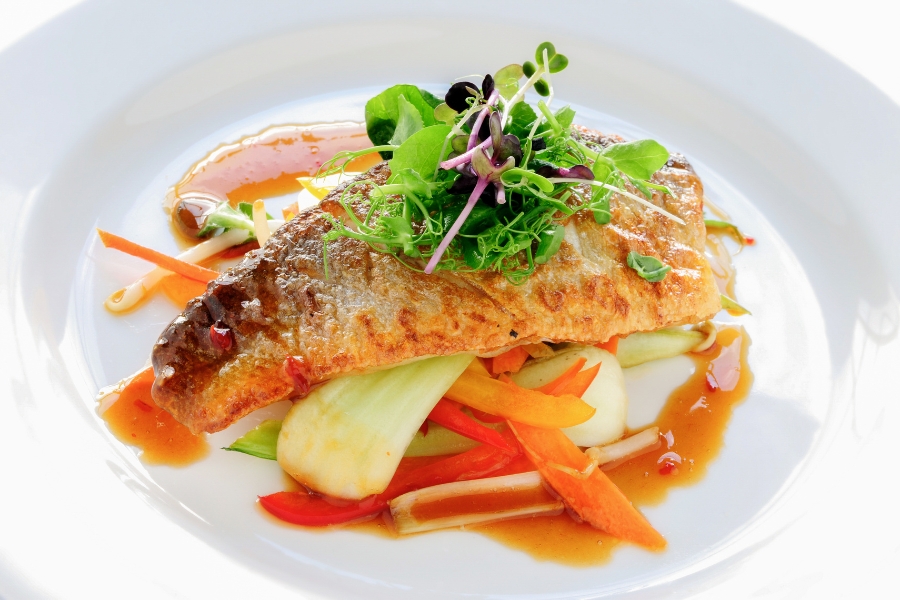
Food is often the centerpiece of any event, leaving a lasting impression on guests long after the plates are cleared. But it’s not just about what’s being served; how it’s served can significantly impact the mood, flow, and overall experience of your event. Choosing the right catering style is crucial to creating the perfect atmosphere and meeting your guests’ needs. Whether you’re hosting a corporate event, a wedding, or a private celebration, understanding the nuances of buffet, plated, family-style, and station catering can help you make the best decision. Let’s dive into each style, breaking down its pros, cons, and ideal occasions.
Buffet: Versatility and Variety
Buffets are the epitome of versatility. They offer a wide array of dishes laid out for guests to serve themselves, making it easy to cater to diverse tastes and dietary restrictions. Buffets also encourage movement and mingling, creating a lively and interactive atmosphere.
Pros:
- Variety: A buffet allows you to offer multiple main courses, sides, and desserts, ensuring there’s something for everyone.
- Flexibility: Guests can choose their portions and customize their plates, accommodating individual preferences.
- Encourages Interaction: Buffets naturally promote socialization as guests navigate the food line.
- Cost-Effective: Buffets typically require fewer servers, which can help reduce labor costs.
Cons:
- Crowding: Without proper organization, buffets can lead to bottlenecks or long lines.
- Casual Atmosphere: Buffets are less formal than plated or family-style service, which may not suit all events.
- Potential Waste: Guests serving themselves may overfill plates, leading to food waste.
Best Suited For:
Buffets are ideal for casual to semi-formal events, such as corporate luncheons, large weddings, family reunions, or holiday parties. They’re particularly effective for events with a diverse guest list, where variety and customization are priorities.
Plated: Elegance and Precision
Plated service is the gold standard for formal events. Guests remain seated while servers deliver pre-selected courses directly to their tables. This style exudes elegance and ensures that each dish is presented beautifully and consistently.
Pros:
- Elegant Presentation: Plated meals are artfully arranged and served, adding a touch of sophistication.
- Controlled Portions: Each guest receives the same portion, which helps manage costs and food waste.
- Structured Flow: Courses are served in a timed sequence, keeping the event on schedule.
- Personalized Experience: Servers can cater to individual needs, such as accommodating last-minute dietary requests.
Cons:
- Higher Costs: Plated service requires more staff and preparation, making it one of the more expensive options.
- Limited Choices: Guests must pre-select their meals, which may not appeal to those who enjoy variety.
- Time-Consuming: Serving and clearing multiple courses takes time, potentially slowing the pace of the event.
Best Suited For:
Plated service is perfect for formal occasions such as weddings, galas, fundraisers, and milestone celebrations. It’s also an excellent choice for smaller events where a refined and intimate dining experience is desired.
Family-Style: Warmth and Togetherness
Family-style catering brings a cozy, communal vibe to any event. Large platters of food are placed on each table, allowing guests to serve themselves while remaining seated. This style encourages sharing and conversation, making it a favorite for intimate and relaxed gatherings.
Pros:
- Interactive Dining: Guests engage with each other as they pass and share dishes.
- Flexible Portions: Like a buffet, guests can choose their portions, ensuring they get exactly what they want.
- Inviting Atmosphere: Family-style dining fosters a sense of warmth and community, perfect for fostering connections.
Cons:
- Space Requirements: Larger tables are needed to accommodate serving platters, which may not suit smaller venues.
- Food Waste: Serving multiple platters per table can lead to excess food.
- Logistical Challenges: Coordinating the timing and replenishment of platters requires careful planning.
Best Suited For:
Family-style service works well for weddings, holiday gatherings, and intimate celebrations where creating a relaxed and welcoming atmosphere is a priority. It’s an especially good choice for events with close-knit groups or where interaction is encouraged.
Stations: Creativity and Customization
Food stations, often referred to as action stations, offer guests a highly interactive dining experience. Each station typically features a different type of cuisine or dish, allowing guests to customize their meals or watch as chefs prepare items on the spot.
Pros:
- Endless Variety: Stations can feature diverse cuisines, catering to a wide range of tastes and preferences.
- Interactive Entertainment: Guests can watch chefs in action or assemble their own meals, adding an element of fun.
- Mingling Opportunity: Stations encourage movement and interaction, perfect for events where guests are expected to network or socialize.
Cons:
- Costly Setup: Stations require additional equipment and staff, which can increase costs.
- Space Demands: Multiple stations require ample room, which may not be feasible in smaller venues.
- Potential Crowding: Popular stations can lead to lines, which need to be managed effectively.
Best Suited For:
Stations are ideal for modern weddings, upscale corporate events, cocktail parties, and any occasion where creating a dynamic, engaging atmosphere is a priority. They work particularly well for events with a large number of guests who enjoy variety and customization.
How to Choose the Right Style
Choosing the right catering style involves considering your event’s unique characteristics and goals. Here are some key questions to guide your decision:
- What’s the formality of the event? Plated service suits formal occasions, while buffets and stations work well for more casual gatherings.
- What’s the size of your venue? Buffets and stations require space for food setup and guest flow, while plated or family-style dining can be more space-efficient.
- What’s your budget? Plated service and stations are often more expensive due to staffing and equipment needs, while buffets and family-style options can be more cost-effective.
- What’s the guest dynamic? For diverse groups, stations or buffets offer flexibility and variety. For close-knit gatherings, family-style dining adds a sense of warmth.
Discuss your vision with your caterer, who can help align the catering style with your event’s theme, budget, and logistics.
Conclusion: Serving Up the Perfect Experience
The catering style you choose sets the stage for your event, shaping how guests experience the food and interact with one another. Whether you opt for the elegance of plated service, the variety of a buffet, the communal warmth of family-style dining, or the creative flair of stations, each option brings its own unique charm and advantages. With thoughtful planning and guidance from your caterer, you’ll create a dining experience that not only delights the taste buds but also enhances the overall atmosphere of your event.
